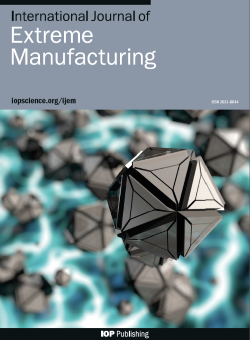二维多功能器件:从材料制备到器件制造和神经形态应用
IF 16.1
1区 工程技术
Q1 ENGINEERING, MANUFACTURING
引用次数: 0
摘要
神经形态计算系统模仿人脑中神经元和突触的运作,因其强大而高效的计算能力而被视为一种极具吸引力的下一代计算方法。具有无悬浮键表面和原子级厚度的二维(2D)材料已成为神经形态计算硬件的理想候选材料。因此,二维神经形态设备可为开发多功能神经形态应用提供理想平台。在此,我们回顾了近期基于二维材料的神经形态器件及其多功能应用。首先介绍了二维材料及其异质结构的合成和下一步微纳制造方法。利用不同的工作原理详细讨论了神经形态二维器件的最新进展。更重要的是,我们综述了新兴的多功能神经形态应用,包括基于二维器件的神经形态视觉、听觉、触觉和痛觉系统。最后,我们讨论了未来二维神经形态设备开发的问题和方法。本文将为设计二维神经形态设备并将其应用于未来的神经形态系统提供启示。本文章由计算机程序翻译,如有差异,请以英文原文为准。
2D Multifunctional Devices: from Material Preparation to Device Fabrication and Neuromorphic Applications
Neuromorphic computing systems, which mimic the operation of neurons and synapses in the human brain, are seen as an appealing next-generation computing method due to their strong and efficient computing abilities. Two-dimensional (2D) materials with dangling bond-free surfaces and atomic-level thicknesses have emerged as promising candidates for neuromorphic computing hardware. As a result, 2D neuromorphic devices may provide an ideal platform for developing multifunctional neuromorphic applications. Here, we review the recent neuromorphic devices based on 2D material and their multifunctional applications. The synthesis and next micro-nano fabrication methods of 2D materials and their heterostructures are first introduced. The recent advances of neuromorphic 2D devices are discussed in details using different operating principles. More importantly, we present a review of emerging multifunctional neuromorphic applications, including neuromorphic visual, auditory, tactile, and nociceptive systems based on 2D devices. In the end, we discuss the problems and methods for 2D neuromorphic device developments in the future. This paper will give insights into designing 2D neuromorphic devices and applying them to the future neuromorphic systems.
求助全文
通过发布文献求助,成功后即可免费获取论文全文。
去求助
来源期刊

International Journal of Extreme Manufacturing
Engineering-Industrial and Manufacturing Engineering
CiteScore
17.70
自引率
6.10%
发文量
83
审稿时长
12 weeks
期刊介绍:
The International Journal of Extreme Manufacturing (IJEM) focuses on publishing original articles and reviews related to the science and technology of manufacturing functional devices and systems with extreme dimensions and/or extreme functionalities. The journal covers a wide range of topics, from fundamental science to cutting-edge technologies that push the boundaries of currently known theories, methods, scales, environments, and performance. Extreme manufacturing encompasses various aspects such as manufacturing with extremely high energy density, ultrahigh precision, extremely small spatial and temporal scales, extremely intensive fields, and giant systems with extreme complexity and several factors. It encompasses multiple disciplines, including machinery, materials, optics, physics, chemistry, mechanics, and mathematics. The journal is interested in theories, processes, metrology, characterization, equipment, conditions, and system integration in extreme manufacturing. Additionally, it covers materials, structures, and devices with extreme functionalities.
 求助内容:
求助内容: 应助结果提醒方式:
应助结果提醒方式:


